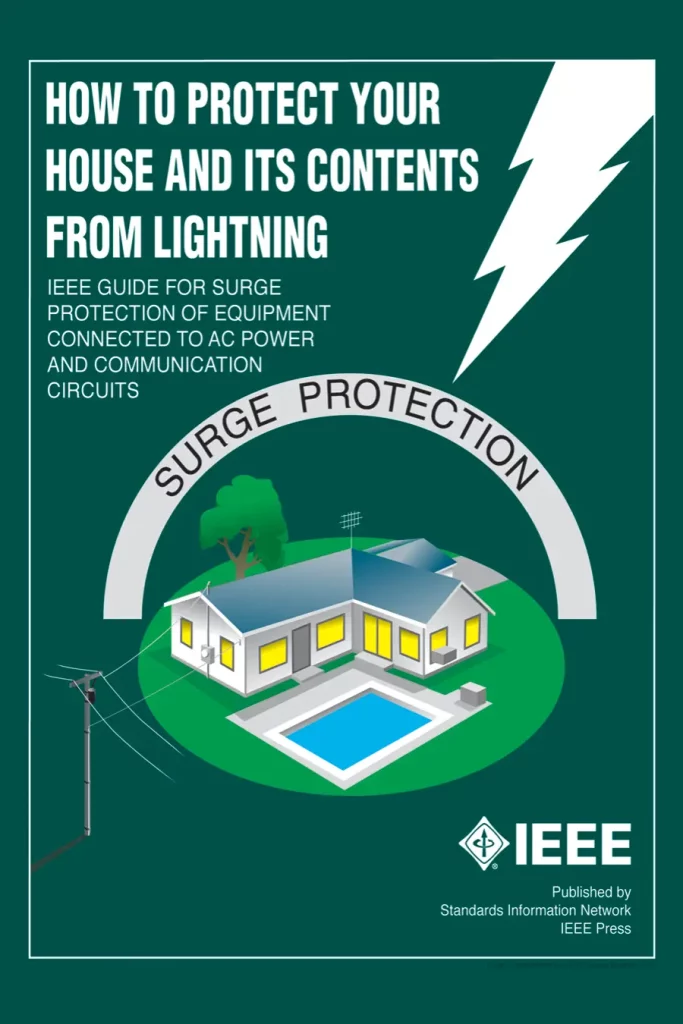This IEEE Guide for Surge Protection of Equipment Connected to AC Power and Communication Circuits.
Authors:
- Richard L. Cohen
- Doug Dorr
- James Funke
- Chuck Jensen
- S. Frank Waterer
Surge protection has become a much more complex and important issue in recent years due to the increased value of electronic equipment in typical residence. Electronic equipment are vulnerable to surges produced by lightning. The traditional approach of AC protection is inadequate to protect most of the equipment in a typical residence.
This guide is intended:
1. To make more widely known the approaches required to protect modern electrical and electronic equipment in houses.
2. To provide useful information about the proper specification and application of surge protectors, to protect houses and their contents from lightning and other electrical surges.
3. For electricians, electronics technicians and engineers, electrical inspectors, building designers, and others with some technical background, and the need to understand lightning protection.
4. To help provide a systematic understanding of what the various parts of a protection system do.
This guide describes the roles of the different elements of protection systems—air terminals (lightning rods), the grounding system, bonding, and building service entrance and point-of-use surge protectors, and the way these elements work together to protect equipment inside a residential building.
The later sections of this Guide provide more detailed information on the selection and installation of surge protectors than is provided in the NEC and NFPA 780.
The authors of this guide are experts in lightning and surge protection in chaired working groups in this area both in IEEE and IEC.
